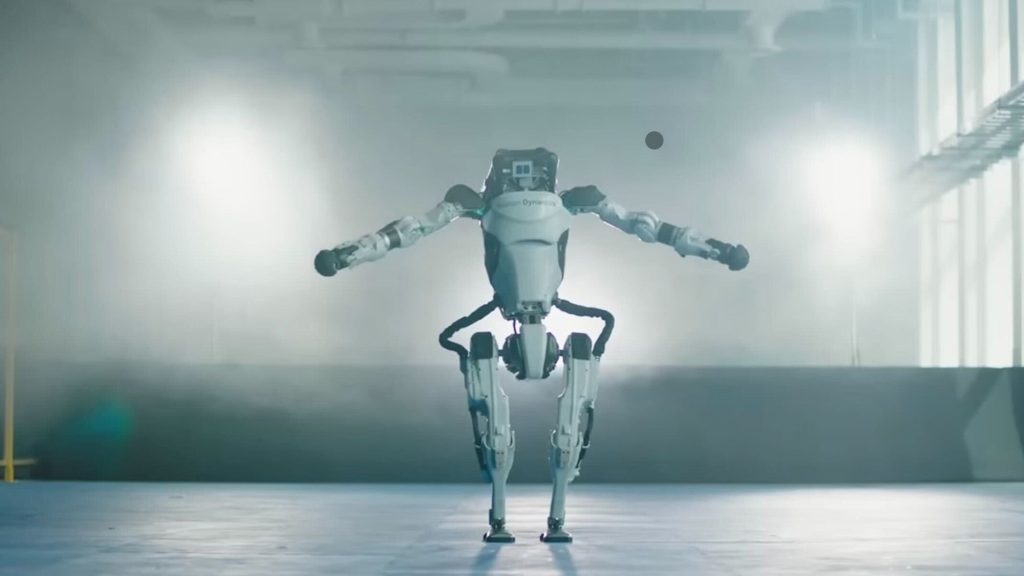Atlas, the huge 330-pound agile robot from Boston Dynamics (that made us feel amazed and scared at the same time) is officially retiring. The 11-year-old iconic two-legged giant will be replaced by a much lighter, all-electric successor. The change marks the end of an era for Boston Dynamics as interest from consumers and investors increasingly shifts towards smaller, adjustable humanoid robots capable of performing manufacturing tasks. smaller, scalable humanoid robots capable of doing manufacturing tasks.
Boston Dynamics honored the original “hydraulic Atlas” with a farewell video this week. The video shows Atlas running through an obstacle course before awkwardly falling to the ground. What follows is a collection of some of Atlas’ best moments over its 11-year-life. Video clips show the robot evolving from a rigid, slow chunk of metal to a powerful robotic athlete capable of doing backflips and throwing large objects with seemingly superhuman strength. Of course, the video also shows Boston Dynamics engineers vigorously testing the capabilities of Atlas by attacking and tripping it throughout the years. Atlas was first made in 2013 for the Pentagon’s Defense Advanced Research Agency. At the time, DARPA praised Atlas as “one of the most advanced humanoid robots ever built.” The remarkable and often imposing machine became popular on the internet with a series of attention-grabbing videos showing it engaging in everything from wild acrobatics to synchronized dance routines and over-the-top construction site work.
Originally produced in 2013 for the Pentagon’s Defense Advanced Research Agency. At the time, DARPA lauded Atlas as “one of the most advanced humanoid robots ever built.” The impressive and often imposing machine went viral on the internet with a collection of eye-grabbing videos showing it engaging in everything from wild acrobatics to synchronized dance routines and over-the-top construction site work real-world applications.” The company says the new Atlas will have a broader range of motion than its predecessor. Hyundai, which extreme acrobatics and synchronized dance routines to exaggerated construction site work.
Boston Dynamics switches focus to smaller, more commercial humanoid robots
In a surprising announcement Wednesday, Boston Dynamics revealed Atlas’ name will actually live on, though in a much different form factor. The company released a brief video showing what appears to be a smaller, two-legged robot with a circular head lying on a test room floor. released a brief video unveiling what looks like a smaller, two-legged robot with a circular head lying on a test room floor. According to the company, this new successor is described as a “fully electric Atlas robot designed for real-world applications.” The new Atlas will have a wider range of motion than its predecessor. Hyundai, which acquired Boston Dynamics in 2021, will start testing the new Atlas in its factories in the coming months, according to the blog post.
In a blog postacquired Boston Dynamics in 2021 will start testing the new Atlas in its factories in the coming months, according to the blog post.Long-term commercialization and scalability seem to have been main factors leading to the retirement of the old Atlas. Since the acquisition by Hyundai, Boston Dynamics has aimed to widely sell other, more affordable products like its “Spot” four-legged robot and its “Stretch” warehouse robot. In contrast, the old Atlas was never sold commercially and may have simply been too expensive for any manufacturer to justify buying it. Boston Dynamics hinted at its commercial plans for the new Atlas in its most recent press release.
“Given our track record of successful commercialization, we are confident in our plan to not just create an impressive R&D project, but to deliver a valuable solution,” the company said.
While primarily an R&D tool, the original Atlas still played a significant symbolic role, setting a technical standard for what other two-legged robots could accomplish. Its prominence helped usher in a new generation of human-like robots from startups like Figure and Agility Robotics, which are seeking to
merge robotics with big language models to enhance their usefulness in performing tasks in actuality. It's interestingly appearing that the new Atlas will now rival the newcomers its predecessor motivated. OpenAI desires to enhance the intelligence of a walking, speaking humanoid robot
[ Related: After 11 years, Boston Dynamics is retiring its iconic 330-pound bipedal robot and substituting it with a lighter, all-electric younger sibling. ]









